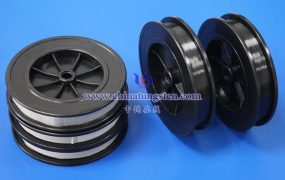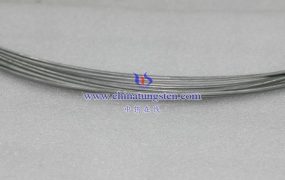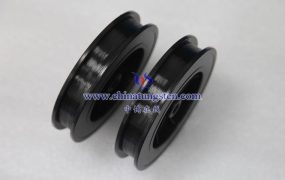
CONTENT
Chapter 1 Overview of Molybdenum Electrodes
1.1 What is a Molybdenum Electrode
1.2 History and Development of Molybdenum Electrodes
1.3 Importance of Molybdenum Electrodes in Modern Industry
Chapter 2 Basic Properties of Molybdenum Electrodes
2.1 Physical Properties of Molybdenum Electrodes
2.1.1 Melting Point and Density of Molybdenum Electrodes
2.1.2 Electrical and Thermal Conductivity of Molybdenum Electrodes
2.1.3 Thermal Expansion Coefficient and Mechanical Strength of Molybdenum Electrodes
2.2 Chemical Properties of Molybdenum Electrodes
2.2.1 Corrosion Resistance and Chemical Stability of Molybdenum Electrodes
2.2.2 High-Temperature Oxidation Behavior of Molybdenum Electrodes
2.3 Forms and Specifications of Molybdenum Electrodes
2.3.1 Common Forms (Rod, Plate, Wire, etc.)
2.3.2 Dimensions and Customization Possibilities
Chapter 3 Manufacturing Process of Molybdenum Electrodes
3.1 Raw Material Sources and Preparation
3.1.1 Molybdenum Ore Extraction
3.1.2 Preparation of High-Purity Molybdenum Powder
3.2 Core Production Processes of Molybdenum Electrodes
3.2.1 Powder Metallurgy Method
3.2.1.1 Pressing and Forming
3.2.1.2 High-Temperature Sintering
3.2.2 Subsequent Processing (Forging, Rolling, Drawing)
3.3 Surface Treatment and Quality Control of Molybdenum Electrodes
3.3.1 Polishing and Anti-Oxidation Treatment
3.3.2 Performance Testing Methods
3.4 Innovations and Improvements in Molybdenum Electrode Manufacturing
3.4.1 New Technologies (e.g., 3D Printing)
3.4.2 Environmentally Friendly Production Trends
Chapter 4 Major Production Regions of Molybdenum Electrodes
4.1 Global Distribution of Molybdenum Resources
4.1.1 Major Molybdenum Mining Areas (China, USA, Chile, etc.)
4.1.2 Molybdenum Production and Reserves
4.2 Molybdenum Electrode Production Bases
4.2.1 China (Shaanxi, Henan, etc.)
4.2.2 USA (Colorado, Utah, etc.)
4.2.3 Europe (Austria, Germany, etc.)
4.2.4 Other Countries (Russia, Canada, etc.)
4.3 Production Enterprises
4.3.1 Major Molybdenum Electrode Manufacturers: China Tungsten High-Tech
4.3.1.1 Performance Comparison Chart of China Tungsten High-Tech Molybdenum and Molybdenum Alloy Electrodes
4.3.1.2 Performance of China Tungsten High-Tech Molybdenum Electrodes
Chapter 5 Application Fields of Molybdenum Electrodes
5.1 Glass Industry
5.1.1 Glass Furnace Electrodes
5.1.2 Optical Glass and Specialty Glass Manufacturing
5.2 Metallurgical Industry
5.2.1 High-Temperature Smelting and Arc Furnaces
5.2.2 Role in Alloy Production
5.3 Electronics and Semiconductor Industry
5.3.1 Vacuum Tubes and Discharge Tubes
5.3.2 Thin Film Deposition and Microelectronic Devices
5.4 Scientific Research and Special Applications
5.4.1 High-Temperature Experimental Equipment
5.4.2 Aerospace and Nuclear Industry
5.5 Emerging Application Fields
5.5.1 Renewable Energy Equipment
5.5.2 Medical Device Components
Chapter 6 Advantages, Disadvantages, and Limitations of Molybdenum Electrodes
6.1 Advantages of Molybdenum Electrodes
6.1.1 High-Temperature Stability and Long Lifespan
6.1.2 Excellent Electrical Conductivity and Corrosion Resistance
6.1.3 Reliability in Extreme Environments
6.2 Disadvantages and Limitations of Molybdenum Electrodes
6.2.1 Sensitivity to Oxidation and Environmental Constraints
6.2.2 Processing Difficulty and Cost
6.2.3 Brittleness and Mechanical Performance Limitations
6.3 Improvement Measures for Molybdenum Electrodes
6.3.1 Anti-Oxidation Technologies
6.3.2 Development of Composite Materials
Chapter 7 Comparison of Molybdenum Electrodes with Other Electrode Materials
7.1 Comparison with Tungsten Electrodes
7.1.1 Performance Differences
7.1.2 Application Scenarios
7.2 Comparison with Graphite Electrodes
7.2.1 Durability and Cost
7.2.2 High-Temperature Performance
7.3 Comparison with Copper Electrodes
7.3.1 Electrical Conductivity and Heat Resistance
7.3.2 Usage Environment
7.4 Comparison with Precious Metal Electrodes (e.g., Platinum)
7.4.1 Economic Viability and Specialized Applications
7.5 Summary of Comprehensive Comparison
Chapter 8 Major Markets for Molybdenum Electrode Applications
8.1 Asia-Pacific Region
8.1.1 China (Glass and Metallurgy Markets)
8.1.2 Japan and South Korea (Electronics and Semiconductors)
8.1.3 India (Industrialization Demand)
8.2 North America
8.2.1 USA (Glass and Aerospace)
8.2.2 Canada (Metallurgy and Research)
8.3 Europe
8.3.1 Germany (Industrial Manufacturing and Optical Glass)
8.3.2 France and the UK (Specialized Applications)
8.4 Other Regions
8.4.1 South America (Metallurgical Demand in Chile and Peru)
8.4.2 Middle East and Africa (Emerging Market Potential)
8.5 Characteristics of Global Application Markets
8.5.1 Industry Distribution
8.5.2 Regional Differences
Appendix
A. Glossary
B. References
C. Technical Standards and Specifications for Molybdenum Electrodes
Chapter 1 Overview of Molybdenum Electrode
1.1 What Is Molybdenum Electrode
Molybdenum electrode is a high-performance electrode material with molybdenum (molybdenum, http://molybdenum.com.cn) as the main component. It is widely used in many industrial fields due to its excellent high temperature performance, corrosion resistance and conductivity. Molybdenum is a transition metal with the element symbol Mo and atomic number 42. It mainly exists in the form of molybdenite (MoS₂) in nature. Molybdenum electrodes are usually made by powder metallurgy process. The molybdenum content is generally required to reach more than 99.95% and the density is greater than 10.15g/cm³ to ensure stability in extreme environments. As a functional material, molybdenum electrodes can be rod-shaped, plate-shaped or wire-shaped. The specific form depends on its use scenario. For example, rod-shaped designs are mostly used in glass melting furnaces, while wire-shaped molybdenum electrodes may be used in some electronic devices.
The core advantage of molybdenum electrodes lies in their physical and chemical properties. Its melting point is as high as 2623°C, second only to tungsten, which enables it to withstand extreme high temperatures without melting or deformation. In addition, molybdenum has low resistivity (about 5.2×10⁻⁸Ω·m) and high thermal conductivity (138W/m·K), making it excellent in applications that require efficient conduction of current and heat. At the same time, molybdenum exhibits excellent corrosion resistance in non-oxidizing acids, molten glass, and certain alkaline environments, which further broadens its industrial use. However, molybdenum electrodes also have limitations, such as the easy generation of volatile oxides (such as MoO₃) in oxidizing atmospheres, so they usually need to be used in inert gases (such as argon or nitrogen) or reducing environments (such as hydrogen).
Structurally, the microscopic grain size and density of molybdenum electrodes have a significant impact on their performance. By controlling the sintering conditions during the production process of high-purity molybdenum electrodes, a uniform grain structure can be obtained, thereby improving their mechanical strength and durability. According to China Tungsten Online Technology Co., Ltd., the surface of molybdenum electrodes usually needs to be polished to reduce the risk of arc discharge and corrosion during use. In addition, molybdenum electrodes can also be customized according to customer needs, such as adding trace rare earth elements (such as lanthanum or cerium) in specific uses to enhance their high-temperature creep resistance.
In actual industry, molybdenum electrodes are widely used. For example, in the glass industry, it is used as a heating element for all-electric glass melting furnaces, which can directly heat molten glass by electricity, replacing traditional heavy oil or gas energy. This substitution not only improves production efficiency, but also significantly reduces carbon emissions, which is in line with the current trend of green manufacturing. In the metallurgical industry, molybdenum electrodes are often used in high-temperature melting furnaces or arc furnaces to help produce high-performance alloys. In the electronics industry, molybdenum electrodes are often used as electrode materials for vacuum tubes or semiconductor devices due to their high conductivity and stability.
1.2 History and Development of Molybdenum Electrodes
The development and application history of molybdenum electrodes can be traced back to the late 19th and early 20th centuries, when scientists and engineers began to explore the potential of high-melting-point metals in industry. As a rare metal, the industrial application of molybdenum started late, mainly due to the lack of refining and processing technology at the time. The earliest molybdenum products were extracted from molybdenum ores by chemical reduction, but the purity was low and could not meet the requirements of electrode materials. It was not until the early 20th century that molybdenum electrodes gradually entered the stage of industrial production with the breakthrough of powder metallurgy technology.
In the 1920s, molybdenum electrodes began to emerge in the glass industry. At that time, glass manufacturing mainly relied on fuel oil or gas heating, which was inefficient and polluting. With the rise of electric melting technology, people found that molybdenum’s high melting point and corrosion resistance made it very suitable as an electrode material in glass melting furnaces. In the late 1920s, some glass manufacturers in the United States took the lead in trying to use molybdenum electrodes and found that it could not only withstand the high temperature and corrosiveness of molten glass, but also significantly improve the transparency and quality of glass. This discovery promoted the widespread use of molybdenum electrodes in the glass industry.
During World War II, the demand for molybdenum surged because it was widely used to manufacture high-temperature alloys in military equipment, such as tank armor and aircraft engine parts. Although molybdenum electrodes were not the main product at the time, the advancement of molybdenum processing technology after the war laid the foundation for the further development of molybdenum electrodes. In the 1950s, with the popularization of all-electric glass melting furnaces, molybdenum electrodes became an indispensable part of the glass industry. At the same time, the rapid development of the electronics industry also opened up new markets for molybdenum electrodes, such as key electrode materials in vacuum tubes and discharge tubes.
Entering the 21st century, the application areas of molybdenum electrodes have further expanded. The aerospace industry began to use molybdenum electrodes to manufacture high-temperature experimental equipment and nuclear reactor components, and the rise of new energy fields (such as solar cells and wind power equipment) also brought new growth points for molybdenum electrodes. According to the “Application and Development of Molybdenum” [2], the production process of molybdenum electrodes has been continuously improved in recent years. For example, its performance has been significantly improved by doping with rare earth elements or adopting new surface coating technologies. In addition, with the increasingly stringent environmental regulations, molybdenum electrodes have gradually replaced some traditional materials due to their low pollution characteristics and have become an important choice for green manufacturing.
From a global perspective, the development of molybdenum electrodes is closely related to the industrialization process of China, the United States and Europe. As the largest molybdenum producer today, China’s molybdenum electrode industry has rapidly risen in the past few decades, especially in areas rich in molybdenum resources such as Shaanxi and Henan. The United States and Europe, on the other hand, dominate the high-end molybdenum electrode market with advanced production technology and R&D capabilities. For example, Climax Molybdenum in the United States and Plansee in Austria are industry leaders in precision machining and customization of molybdenum electrodes.
1.3 The Importance of Molybdenum Electrodes in Modern Industry
In modern industry, the importance of molybdenum electrodes is reflected in many aspects. First, its excellent performance in high temperature and corrosive environments makes it an ideal choice for many key processes. Taking the glass industry as an example, the operating temperature of the all-electric glass furnace is usually over 1500°C, and the molten glass also contains a variety of corrosive components (such as alkali metal oxides). Molybdenum electrodes can work stably for a long time under such extreme conditions, and their service life can reach thousands of hours, greatly reducing the maintenance cost and downtime of the equipment.
Secondly, the high electrical conductivity and thermal conductivity of molybdenum electrodes give them significant advantages in scenarios requiring efficient energy transmission. For example, in the electronics industry, molybdenum electrodes are used as sputtering targets for the production of thin-film transistors and display screens, and their uniform current distribution and thermal conductivity ensure the stability of product quality. In the metallurgical industry, the use of molybdenum electrodes in electric arc furnaces can improve melting efficiency and help produce high-strength special steels and alloys.
In addition, the environmental friendliness of molybdenum electrodes also reflects their importance. Traditional glass melting processes rely on fossil fuels, which not only consume a lot of energy, but also produce a lot of carbon dioxide and sulfides. The electric melting technology using molybdenum electrodes is heated by electric energy and produces almost no pollutants, which is in line with global emission reduction goals. According to a report by China Tungsten Online [1], the use of molybdenum electrodes can reduce carbon emissions by tens of thousands of tons each year, which is particularly prominent under current environmental policies.
Molybdenum electrodes have also played a role in promoting the development of emerging technologies. For example, in the aerospace field, molybdenum electrodes are used to manufacture high-temperature resistant experimental furnaces to test the performance of new materials in extreme environments. In the nuclear industry, molybdenum electrodes are used in certain components of nuclear reactors due to their radiation resistance and high-temperature stability. With the popularization of renewable energy equipment, the potential application of molybdenum electrodes in solar cells and energy storage systems is also being explored.
From an economic perspective, although the high performance of molybdenum electrodes is accompanied by a higher initial cost, their long life and low maintenance requirements make their overall cost-effectiveness better than many alternative materials. For example, in the glass industry, the cost of using a set of molybdenum electrodes may be 30% higher than that of graphite electrodes, but its life span is 2-3 times that of graphite, which ultimately reduces the production cost per unit product. This economic benefit makes molybdenum electrodes highly competitive in the global market.
READ MORE: Complete Guide to Molybdenum Electrode
===================================================================
Customized R&D and Production of Tungsten, Molybdenum Products
Chinatungsten Online and CTIA GROUP LTD have been working in the tungsten industry for nearly 30 years, specializing in flexible customization of tungsten and molybdenum products worldwide, which are tungsten and molybdenum design, R&D, production, and overall solution integrators with high visibility and credibility worldwide.
Chinatungsten Online and CTIA GROUP LTD provide products mainly including: tungsten oxide products, such as tungstates such as APT/WO3; tungsten powder and tungsten carbide powder; tungsten metal products such as tungsten wire, tungsten ball, tungsten bar, tungsten electrode, etc.; high-density alloy products, such as dart rods, fishing sinkers, automotive tungsten crankshaft counterweights, mobile phones, clocks and watches, tungsten alloy shielding materials for radioactive medical equipment, etc.; tungsten silver and tungsten copper products for electronic appliances. Cemented carbide products include cutting tools such as cutting, grinding, milling, drilling, planing, wear-resistant parts, nozzles, spheres, anti-skid spikes, molds, structural parts, seals, bearings, high-pressure and high-temperature resistant cavities, top hammers, and other standard and customized high-hardness, high-strength, strong acid and alkali resistant high-performance products. Molybdenum products include molybdenum oxide, molybdenum powder, molybdenum and alloy sintering materials, molybdenum crucibles, molybdenum boats, TZM, TZC, molybdenum wires, molybdenum heating belts, molybdenum spouts, molybdenum copper, molybdenum tungsten alloys, molybdenum sputtering targets, sapphire single crystal furnace components, etc.
If you are interested in related products, please contact us:
Email: sales@chinatungsten.com|
Tel: +86 592 5129696 / 86 592 5129595






